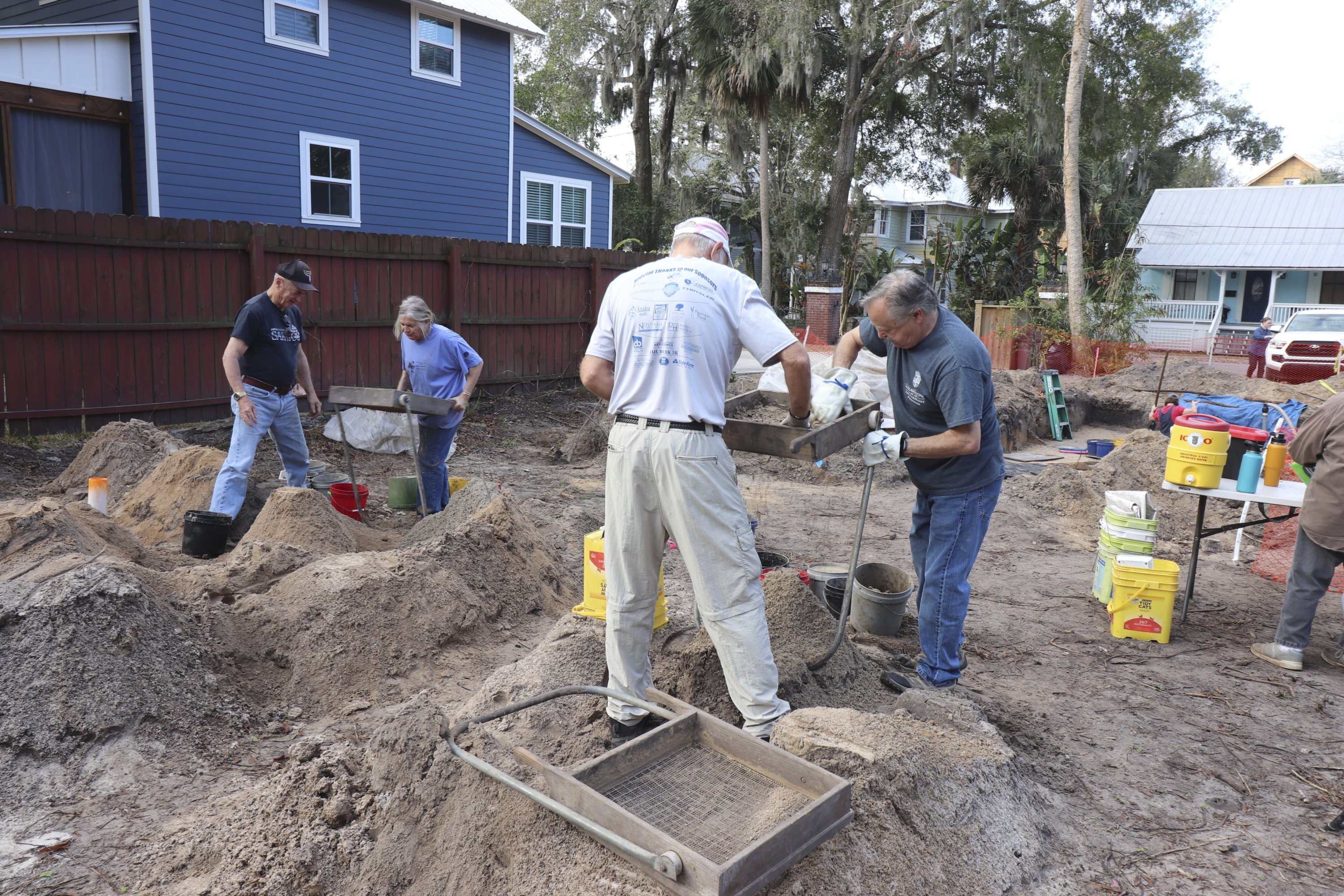© Turkuvaz Haberleşme ve Yayıncılık 2025
The city of St. Augustine – with its centuries-old buildings and massive stone fort – is an enduring reminder of Spain’s storied history in Florida, going back generations before the United States even existed. But for two decades in the 1700s, Great Britain controlled the region, and archaeologists finally found some of their long-sought-after footprints.
City archaeologists identified a dry moat last fall of a British redoubt, a fortified military outpost, that had been constructed in 1781. Excavations were completed last month in the city's Lincolnville neighborhood, making way for the construction of a new single-family home.
"St. Augustine had a 20-year British period,” city archeologist Andrea White said. "They came and built seven of these redoubts, and nobody has ever found any archaeological evidence. We have rough ideas of where they were, appearing on historic maps. But we’ve never found actual, tangible, archeological evidence for any of them until recently.”
The Spanish military built the Castillo de San Marcos in the late 1600s, and the fort remains on the western shore of Florida's Matanzas Bay, though as a national monument rather than a military installation.
When the British took control of Florida in 1763, St. Augustine already had extensive Spanish-built defenses, but British officers were concerned about an attack from a nearby river and ordered the construction of the outposts along the city's western edge.

White said Britain's relatively brief occupation of St. Augustine, which ended along with the American Revolution in 1783, has been largely forgotten by time, and the discovery of the fort is a way to reclaim a little piece of lost history.
"That’s what’s interesting about these British redoubts, they’re the only defenses that the British built themselves,” White said. "Everything else that’s in St. Augustine or the surrounding area that everyone’s familiar with, those were already built by the Spanish. And then the British just kind of reoccupied them.”
The structure was discovered thanks to a unique archaeological preservation ordinance adopted by St. Augustine in 1986, White said. Founded in 1565, the city is the oldest continuously occupied part of the U.S. that was previously a European settlement. To document and preserve that history, St. Augustine has its own archeology program that is part of the city's planning and permitting department.
"We get a chance to come in and document what’s there prior to construction,” White said. "We never stop construction, that’s not the goal. It’s just to give us some time to come in, document what might be there, learn a little bit more about our history and then the project gets to move forward.”
White knew the area under development had a long history, going back to a Native American mission in the early 1700s, followed later by an agricultural plantation and after the Civil War, the construction of the Lincolnville neighborhood.
"So we knew we had multiple centuries of history that could potentially be on the property, but we’re pretty excited actually to find evidence,” White said. "We found evidence of a large moat about 15 feet wide that would have been part of the rampart.”
Researchers found few artifacts at the site and are still unsure about the fort's actual size and shape, but they did recover thousands of different types of seeds. White said they’re working with a paleoethnobotanist, who studies the history of how humans and plants interact, to learn how the structure was built and used. It’s possible that plants like Spanish bayonet or prickly pear cactuses were used to prevent erosion or to slow down attacking soldiers.
"So we’re very hopeful that we might find some good information from our plant remains that we’ve recovered,” White said.

Jason Heidgerken, the contractor working on the lot where the fort's moat was found, said the city's archeological program can certainly cause delays, but White and her team were great and communicating well, so he could adjust his timelines.
"I’ve been around St. Augustine since 1980 personally, and part of the attraction is the history,” Heidgerken said. "So if you want to live there and do this kind of business, it’s to be expected, and you must have the patience for it.”
Over the past four decades, the city's archaeology program has completed more than 1,200 projects. Researchers have collected data from Spanish colonial times and Native American settlements and villages that go back 4,000 years.
"I think what the city does is pretty cool. I’m a history nut myself,” Heidgerken said. "I think it’s pretty neat.”
